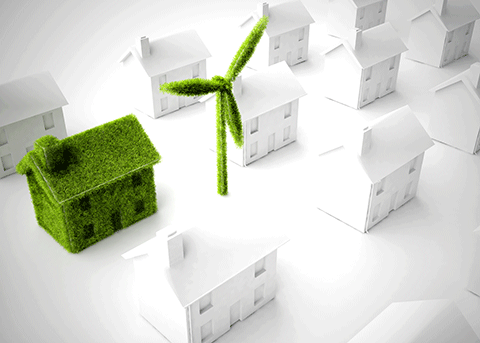Window replacement firms looking for a growing niche market with high margins and low competition may want to consider a move into passive house window installs.
In the past 10 years, the market has grown from about 10 projects to more than 400 that are either built or pre-certified — a nearly 4,000% increase, according to the Passive House Institute US or PHIUS. And many more are in the pipeline. “We’re really seeing the market skyrocket, to be honest,” said Mike Knezovich, PHIUS’s communication director.
He said two developments are fueling this boom:
1) Passive house standards have been updated to reflect different climate zones, making the designs more practical.
2) Multifamily developers have started to discover the benefits of passive house design where it actually makes even more sense.
“Those two factors really lit the fuse,” Knezovich said.
In essence, passive house design is all about creating an extremely airtight building envelope that requires the least amount of energy to heat and cool interior spaces. Knezovich likened the principle to a thermos with continuous air exchange. That design leads to a structure that saves as much as 80% on heating and cooling over conventional construction.
Of course, a major part of the design consideration involves windows, where much of the solar heat gain and loss occurs in conventional homes and buildings. This loss occurs not only through the panes, but also through the frames themselves, which are as much as 40% of a window’s opening. Passive house windows correct this problem with:
· High thermal insulation, triple glazing with special coatings and gas to manage solar heat gain and loss.
· High thermal insulation framing that’s typically made of wood rather than vinyl or aluminum.
· Special design and spacers to break thermal bridges between frames and walls.
Of course, all that specialization comes at a cost. Passive house windows can be as much as 10 times more expensive than typical entry-level replacement windows, according to PHIUS. These windows are also so specialized they’re still hard to even find in the U.S. Most passive house windows come from Europe and installers who decide to work in this market will need to account for the extra hurdles that entails.
Just ask Robert Graziano, Window City’s sales and marketing director. His firm is taking on its first passive house window installation on a high-end multifamily condo project called Candela, and the windows are coming from Austria via a distributor in Canada. “There’s a lot of ramifications and steps you have to deal with that you would never consider when using a domestic manufacturer,” Graziano said.
Along with different currencies and languages, Window City has had to deal with a whole new installation method along with special accessories, sealing tapes and caulking the manufacturer requires. His team also needed to attend a two-training seminar in Toronto and reps will be on hand during the first week of the job to ensure proper installation.
But Graziano said all that extra effort is worth it because it’s allowing him to get a foothold in a profitable niche. “These projects run under the radar a bit so it cuts down on the competition and you can work on higher margins,” he said. “This is high-end stuff that requires a lot of craftsmanship.”
And although the bulk of the work is currently in new construction, Knezovich said that will quickly change as more and more passive house projects become a reality and begin to age. “Eventually, those windows will need replacement, too,” he said.
